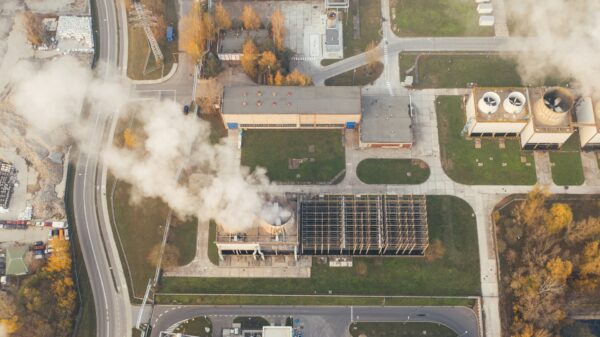We spend almost 80% of our time in enclosed spaces: in homes, workplaces, leisure areas, schools and so on. It is therefore very important to optimize the ventilation of these spaces, in order to limit indoor air pollution generated by certain gases. Detecting carbon monoxide (CO) is useful. In fact, inhalation of this gas triggers headaches, fatigue, nausea, and can even prove fatal.

Published on 12 February 2024
How to detect carbon monoxide (CO)?
In this article:
Carbon monoxide, a toxic molecule for our bodies
Asphyxiating and undetectable to the naked eye, it spreads rapidly through the environment. Depending on the degree of exposure to this molecule, the victim may experience various sensations. These vary according to :
- CO concentration in the air
- Duration of exposure
- Degree of activity (the more intense the physical effort, the faster the breathing, and the more carbon monoxide inhaled)
- The individual’s state of health (respiratory or cardiac problems)
Carbon monoxide remains the leading cause of accidental toxic death in France. It can have serious consequences for the human body. Today, there are 3,000 accidents and 180 deaths due to carbon monoxide inhalation every year.
Where does carbon monoxide come from?
Carbon monoxide is a dangerous and deadly gas. That’s why it’s important to know from which devices it can be emitted. Carbon monoxide can come from :
- Oil, wood, coal and gas heating systems;
- Individual gas boilers ;
- Tools, combustion-powered vehicles and other gasoline-powered equipment;
- Outdoor appliances such as barbecues, kitchens and stoves;
- Gas-powered appliances such as ovens, stoves and space heaters.
How is carbon monoxide measured?
CO is measured in parts per million (PPM). Depending on the threshold reached, the person may experience various symptoms:
- 200 ppm: headaches, vomiting, fatigue
- 400 ppm: severe headaches, death after 3 hours’ exposure
- 800 ppm: loss of consciousness in 45 minutes, death in 2 to 3 hours
- 1600 ppm: loss of consciousness in 20 minutes, death within an hour
How can you prevent the effects of carbon monoxide?
To avoid accidents and ensure optimum safety, we recommend that you install a carbon monoxide detector inside your home. This safety device accurately detects the CO level in an enclosed space, and alerts occupants to evacuate as quickly as possible.
What is a DAACO?
DAACO stands for “Détecteur Avertisseur Autonome de Monoxyde de Carbone”.
This device analyzes and measures the concentration of CO in an indoor environment. It emits an audible and visual alarm to alert occupants to the presence of carbon monoxide.
For added safety, these sensors can also be interconnected. This technology enables several products to communicate with each other. In a building, if a detector rings, it sends a signal to other products, which in turn ring to warn of danger.
What are the standards for DAACO?
In residential buildings, installation of an ACAD is recommended, but not mandatory. To be installed and ensure the safety of a space, the CO detector must be CE marked and comply with European standard EN50291-1.
How to limit the risk of poisoning?
Preventive measures must be taken to reduce the risk of accidents. The best way to avoid carbon monoxide poisoning is to act safely:
- Install the carbon monoxide detector in rooms with combustion appliances
- Comply with equipment use and safety rules
- Limiting the use of fuel-burning appliances in enclosed spaces
If the detector is triggered, it is imperative to leave the home immediately and call for help.
What to do when CO is detected
If carbon monoxide is detected, safety rules must be followed:
- Switch off combustion appliances if possible
- Evacuate the premises
- Call for help by dialing 18, 15 or 112 (114 for the hearing-impaired).
- Do not return to the premises until emergency services have been notified.
To avoid poisoning, it is useful to take a few precautions:
- Air for at least 10 minutes every day, even when it’s cold
- Limit prolonged use of auxiliary heaters
- Place generators outside buildings
- Cleaning your chimney flue
- Checking heating systems
Carbon monoxide is an asphyxiating gas that spreads rapidly through the atmosphere. Installing a carbon monoxide detector will measure the level of CO in a room, and warn occupants in the event of danger by means of an audible alarm. In this way, you ensure the safety of your home and the health of its occupants.